 Phil Craft
Phil Craft Monitoring for varroa, by Phil Craft
Phil Craft is a beekeeper and is the retired Kentucky bee inspector in the United States. He was a contributor to Bee Culture magazine for many years, Ask Phil – a question/answer column. He continues to share his knowledge through presentations to beekeepers at local and national events, and during the time of Covid many virtual meetings. Phil is passionate about beekeeping, he continues to maintain his 20 beehives, and works as a technical advisor in the United States for Véto-pharma.

Varroa mites first appeared in the United States in 1987 in hives belonging to commercial beekeepers, and within a couple of years mites were detected in Canadian colonies, as well. The mites followed a long path from Asia, with the exact route unknown, but we think they first came into the United States via Mexico, flying across the border on honey bees hosts. Fences and walls at the border did not hinder their advancement. Colony losses in the first years after migration to the US have been devastating.
Many years later when I was speaking about varroa control to a group of beekeepers, I asked them: “What were your losses that first year?”. Most of them replied “lost all of my hives”, and the others said “most”. With no known controls the United States Environmental Protection Agency (EPA), who registers pesticides in the U.S., quickly authorized an emergency exemption for the use of tau-fluvalinate for control, which was later registered, and sold in the form of strips as the miticide Apistan®.
In the first years, beekeepers treated for varroa by inserting Apistan strips in the brood boxes in the “spring and fall”. While this “by the calendar” treatment timing was effective at least for a while; problems soon developed. Varroa mite resistance to fluvalinate appeared in 1999, and an alternative pesticide, coumaphos, marketed as CheckMitePlus™ appeared on the beekeeping market. However, varroa mite resistance to coumaphos quickly followed, and scientists began urging beekeepers to monitor for varroa to limit the number of applications of miticides and to help prevent varroa resistance.
Today, monitoring is also used to guide effective timing of miticide application. For many years, beekeeping educators told beekeepers “not to delay their miticide applications”, and that postponing varroa treatments will allow mite infestations to increase to problematic levels. That a hive is “dead but does not know it yet” is often used to describe hives with extremely high numbers of mites, and doomed to collapse by excessive varroa infestation.
The effective recognized monitoring methods, alcohol washes and powdered sugar rolls, utilize a sample of approximately one-half cup of honey bees by volume, which is very close to 300 individual bees. The purpose of both of these methods is to separate the mites from the bees in the sample, enabling the tester to count them and estimate the infestation rate in the colony. This way, a representative infestation of varroa mites per one hundred worker bees in the colony is determined. Past monitoring has established threshold ranges for these values that can inform the beekeeper about the necessity to apply control products, like Apivar. The action of delaying treatment, and allowing varroa infestations to climb too high, make a reduction of varroa levels to numbers that ensure survival of the colony much more difficult.
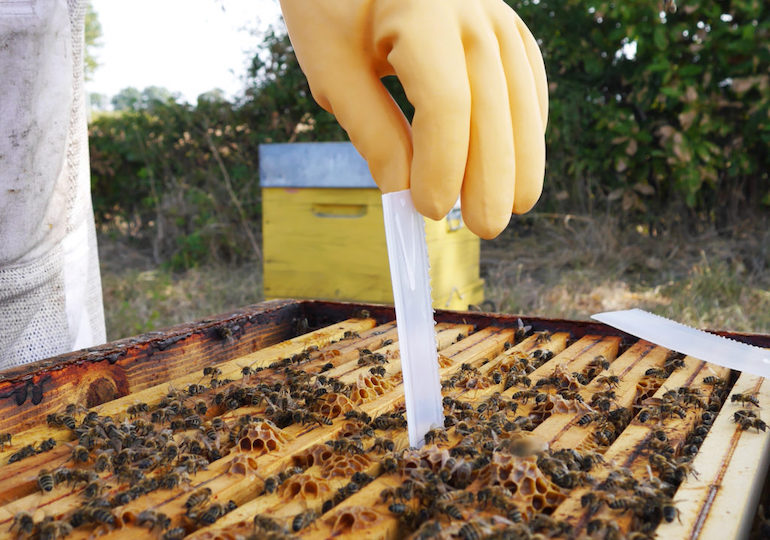
These thresholds of varroa mite numbers per one hundred bees, refer to the level at which colonies will potentially be damaged. Detailed directions for conducting both alcohol washes, and powdered sugar rolls may be found in Véto-pharma’s Varroa Guide. The Varroa Guide also contains additional information about varroa mites, monitoring, and Véto-pharma’s tool for conducting monitoring – the Varroa EasyCheck.
To determine threshold, collect ½ cup of bees (which approximately 300 bees) and apply your mentoring method (alcohol or sugar). Once you know the number of mites that have been washed or removed from the bees, divide by 3 to obtain your threshold of mites per 100 bees.
If these numbers exceed a threshold of 2 mites per 100 bees, intervention by the beekeeper with a varroa control product is required. Allowing mite infestations to climb beyond this threshold can create damage to the colony, or even lead to colony losses.
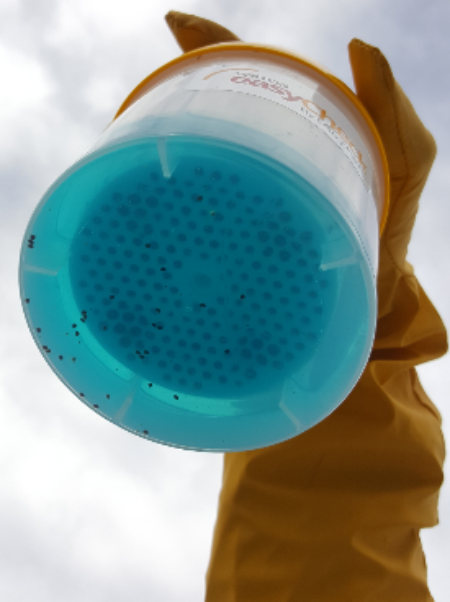
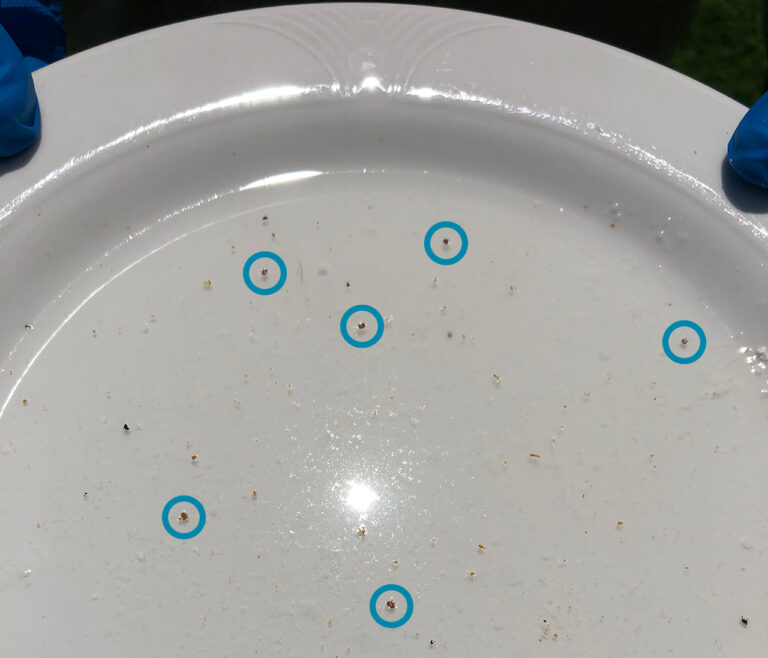
I have found that beekeepers who effectively control varroa monitor at least once per month. If you live in an area with cold winters, this is not practical. So, monitor in warm months, the first time in early spring after temperatures allow opening the hive, and then again before adding supers to the hive. Monitor again when honey supers are removed, which is typically mid to late summer and shortly before the summer treatment season. Monitor again after your summer treatment is finished to control treatment efficacy. Before the onset of cold weather when preparing your hives for winter is your next date for monitoring before overwintering.
In general, monitoring is highly suggested after all miticide applications. Reinfestation with varroa mites after treatment is always possible. If you have colonies nearby that are not treated at the same time, or belonging to other beekeepers who have not (yet) treated, your healthier colonies may rob these weaker varroa infested colonies and return home with freshly picked-up varroa. This can cause your varroa infestation level to soar unexpectedly at the end of the season. In this situation, reapplication of a miticide may be necessary.
In addition, monitoring early in the year is critical since collecting honey can complicate varroa control. Most miticides cannot be applied when honey supers are on the hives, since honey collection periods with supers installed may last for several months. In addition, honey bee populations and the amount of capped brood will be at a peak during honey flows. Varroa mite numbers will also increase due to mites reproducing in the brood. Thus, it is important for beekeepers to have varroa numbers as low as possible before placing honey supers.
Monitoring in the fall, and making a miticide application at that time, will help ensure that your colonies show limited varroa infestation levels during the winter. Since colonies will decrease the amounts of brood reared in the colder months, varroa reproduction will also decrease. Though a winter application of oxalic acid is an effective “mop up” alternative in winter.
Varroa mites continue to be one of the greatest challenges of beekeeping today, as well as the primary cause of colony losses. And controlling varroa is challenging. Effective control is possible with monitoring and effective application of products to reduce varroa infestations.
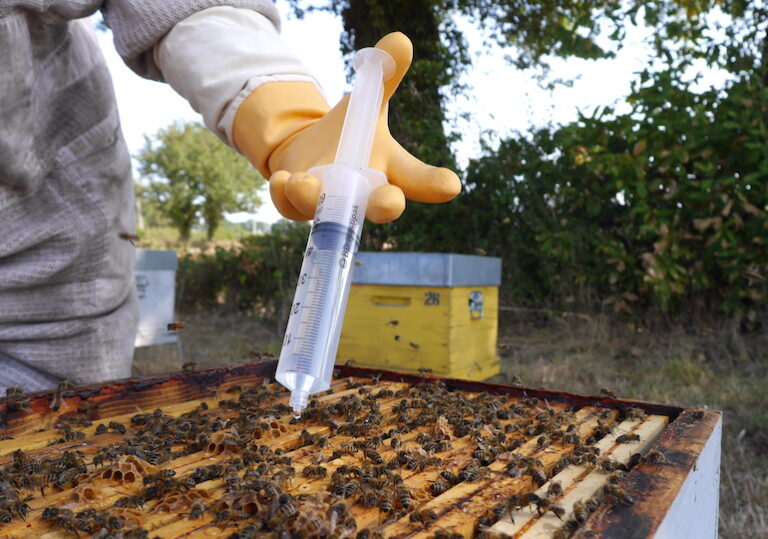
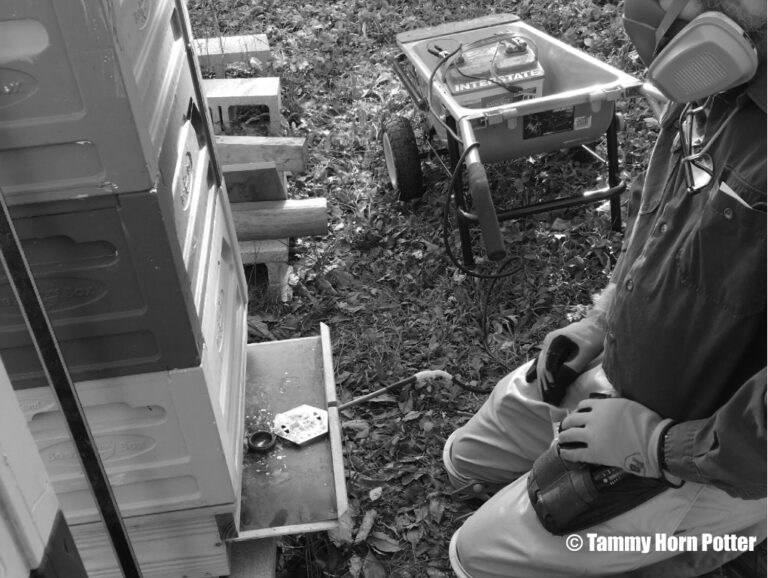
Join the Véto-pharma community and receive our quarterly newsletter as well as our occasional beekeeping news. You can unsubscribe at any time if our content does not suit you, and your data will never be transferred to a third party!
© 2019-2025, Véto-pharma. All rights reserved